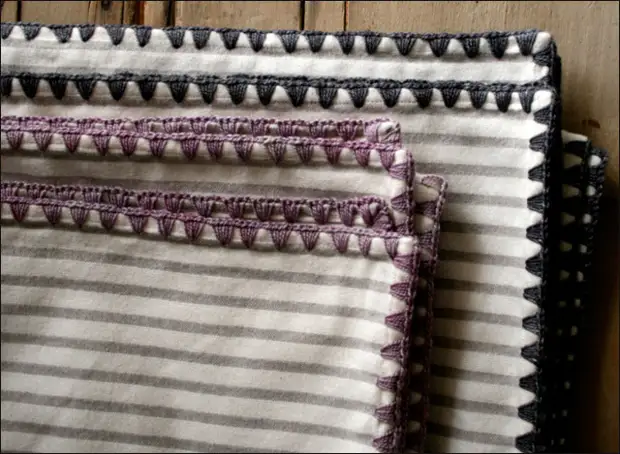
Several meters of yarn, hook, cutting fabric, a little labor - and as a result, cozy home textiles!
Each needlewoman always exists a few segments of the fabric, which lie "just in case" or "may be needed" or "And how can they be thrown out at all." They can lie for years and wait for their fate to be adapted. That's it from such trimming of cotton fabric, from which originally, for example, was sewn bedding, we will make napkins for the dining table.
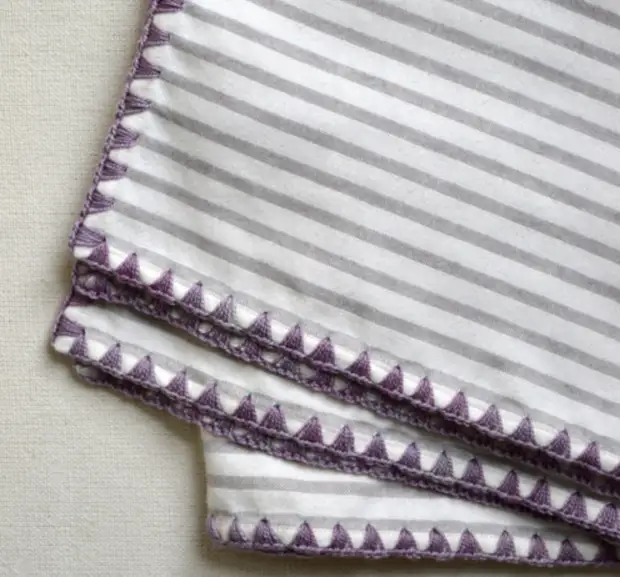
Only napkins we will not sew, but tidy yarn.
We will need: cloth, yarn (cotton, acrylic, or blended yarn), not fat, approximately 200-250 m per 50 g, hook №1.5-1.8, thick needle or awl, tailor needles.
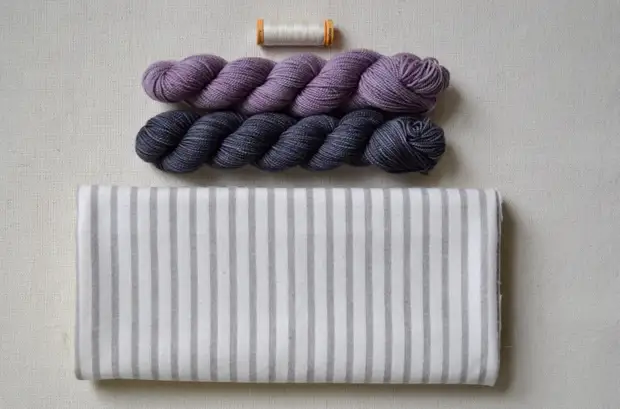
Cut the tissue cut square or rectangular shape, secure the edges of the inside (approximately 0.7-1 cm) by the portnis needles, start. After the same distance (in our case, 1.2 cm) a thick needle make holes in the tissue.
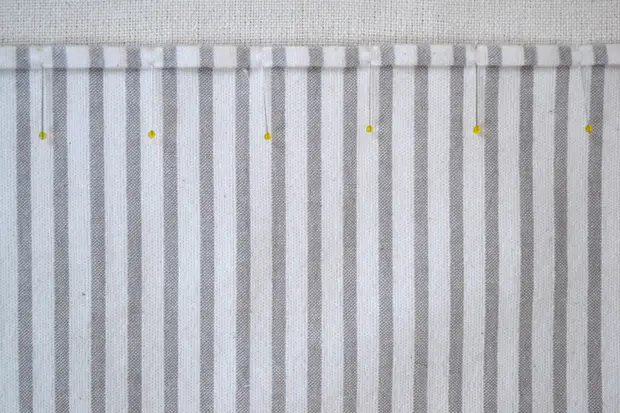
Now we start the strapping. Pull the loop on the front side (cloth with a bending on the wrong side). Check 2 columns without Nakid.
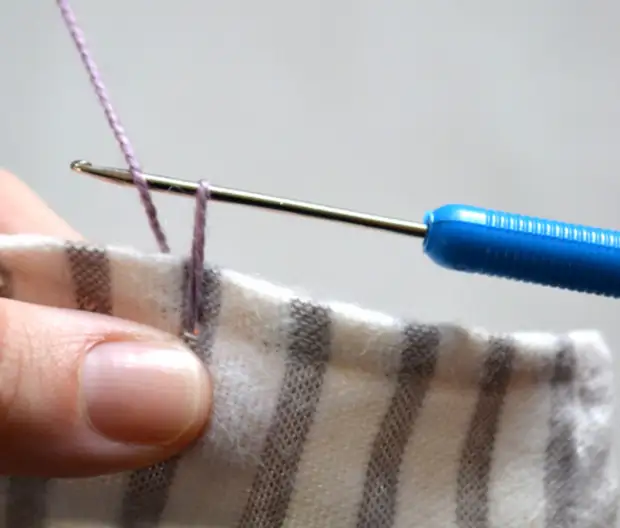
Next * 1 Air loop and the next hole 3 of the column without a Nakid *.
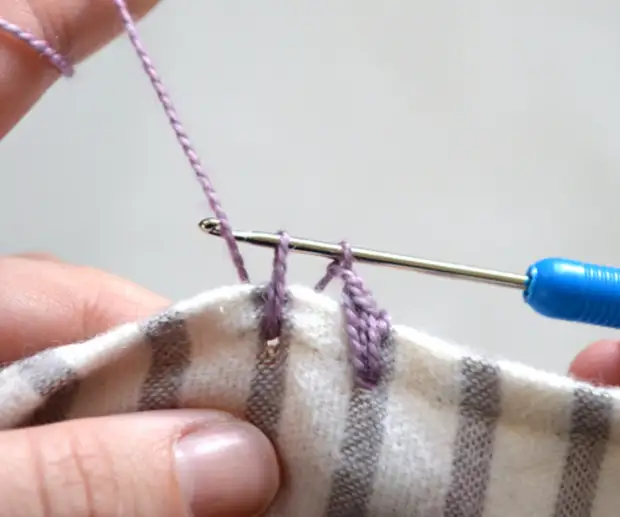
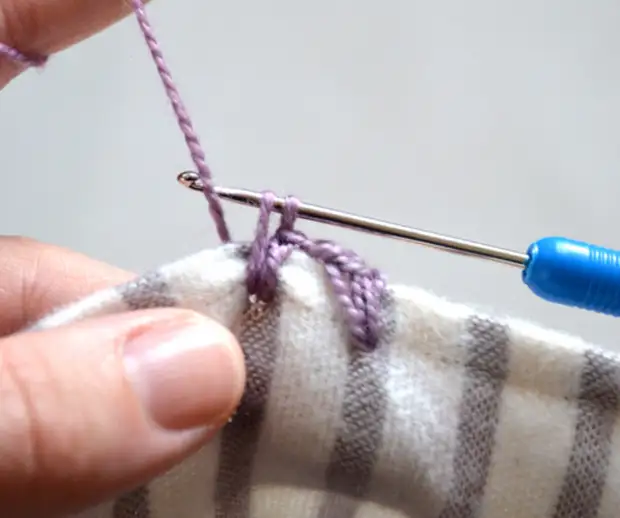
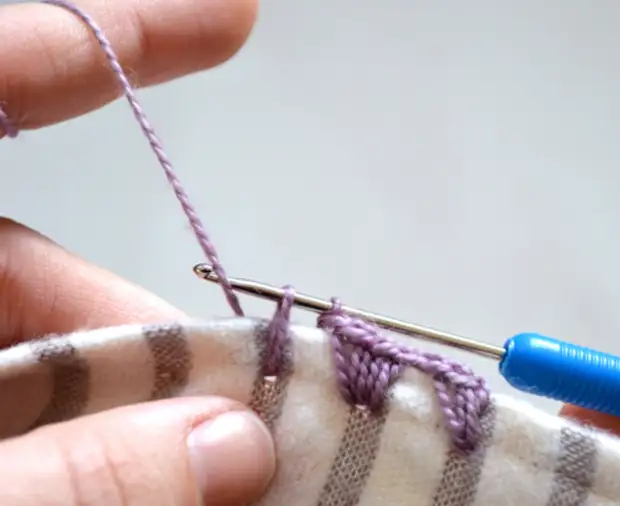
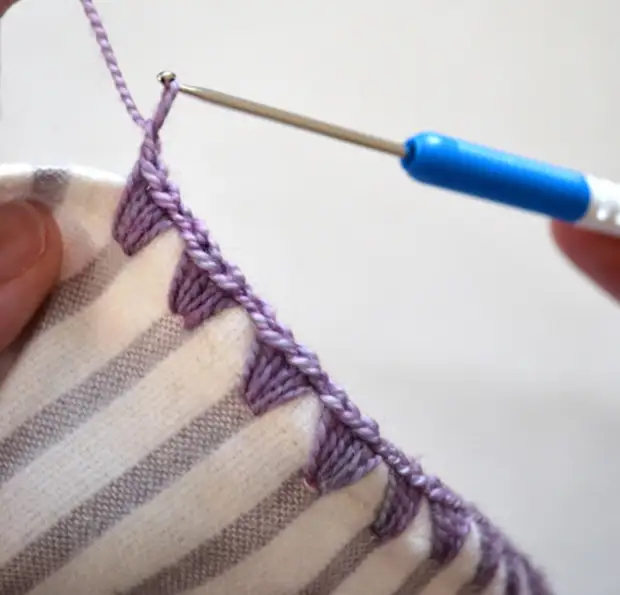
On the angular part, instead of 1 air loop, check 3 air loops, and check the columns to one base.
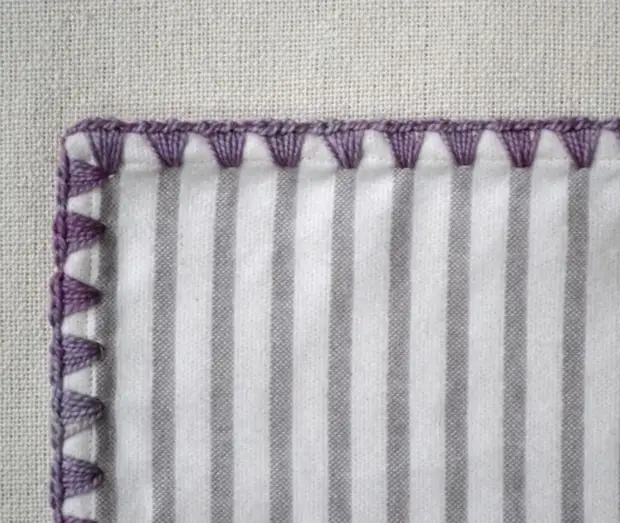
At the end of knitting, check another missing column in the initial basis, fasten and cut the thread.
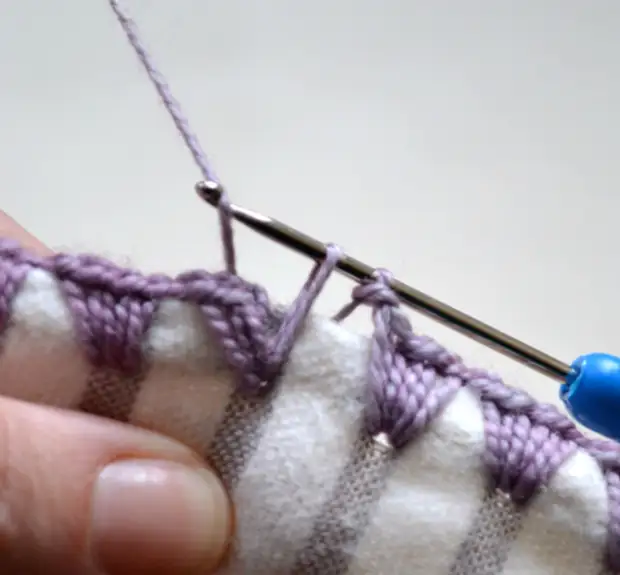
Everything is your fabric rided and looks neat and well maintained. Such a fabric (depending on the size) can serve as napkins, towels, bedspreads, etc.
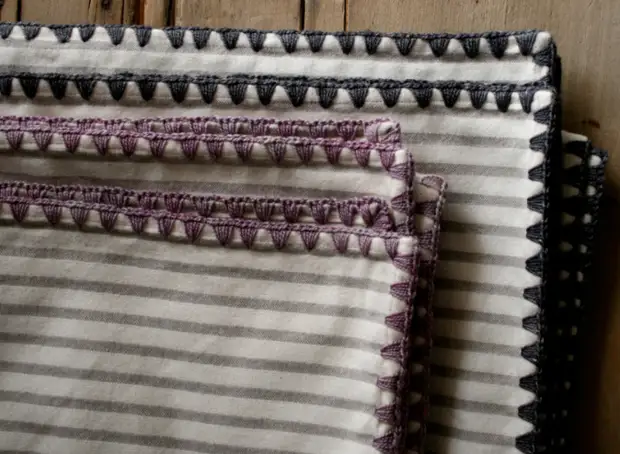
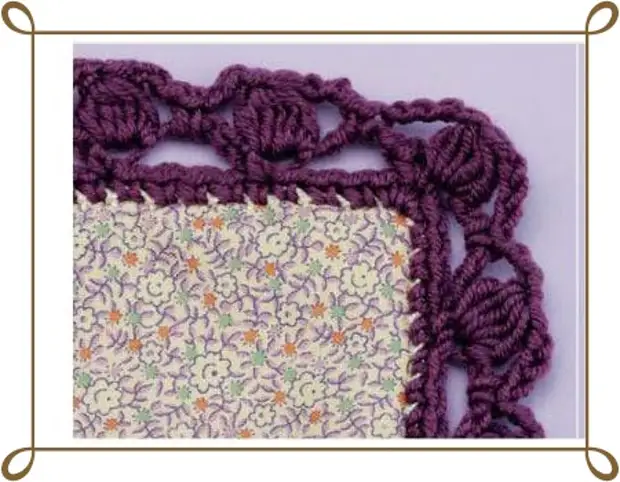
The proposed method of reinforcing the edge of the crochet and the connections with its help parts of the fabric or skin can be called "the most elegant solution for this operation" (this is what the French encyclopedia for knitting). Unfortunately, magazines and books on needlework are paying such "trifles" very attention, although they depends on them no less than from the skill of the needlewoman to handle crochet and knitting needles.
Someone, a combination of a tambourine with knitting crochet may seem unnecessary complication. In the literature on knitting, another method is much more popular: along the edge of the skin loster at an equal gaps, the holes are pierced, in which the hook is then administered when the edge is imposed. When working with a cloth, it is usually advised to combine the binding of the edges with the piercing holes. It would seem if everything is so simple, then why so little work in the patchwork technique made in this way? Relying on your "Needlework Observations" I can answer like this: First, not every fabric or skin will withstand such a frequent puncture on the edge; Secondly, to avoid thickening of the edge with this method of obliging will be able only to the Master of Extra class.
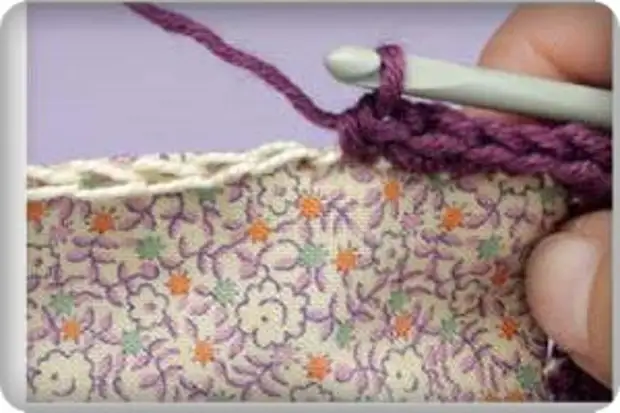
How long and successfully uses a tambourine seam as very affordable and spectacular outward way to decorate work from the skin, felt or tissue has been told.
It is much later to combine it with knitting crochet, but this did not prevent the recognition of the "Union" as one of the most successful ways of connecting parts from fabric and leather.
It is absolutely not necessary to perform a tambourine manually, the benefit of most sewing machines have been taught to perform his imitation for more than two decades.
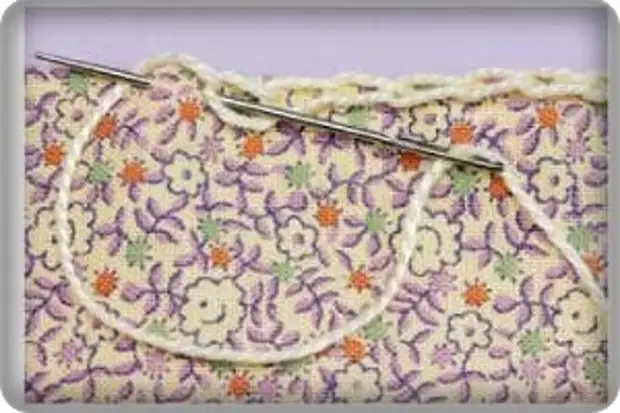
In the pictures of the left, two versions of the obligation are shown: along the edge itself and with a small retreat from it. The first option is advised to be used only for those tissues or types of leather, in the strength and gravity of the edge of which there are solid confidence, with the slightest doubts it is better to use the second option.
For a tambourine, durable cotton or synthetic threads are selected, the thickness of which should be noticeably less than those that are selected for knitting.
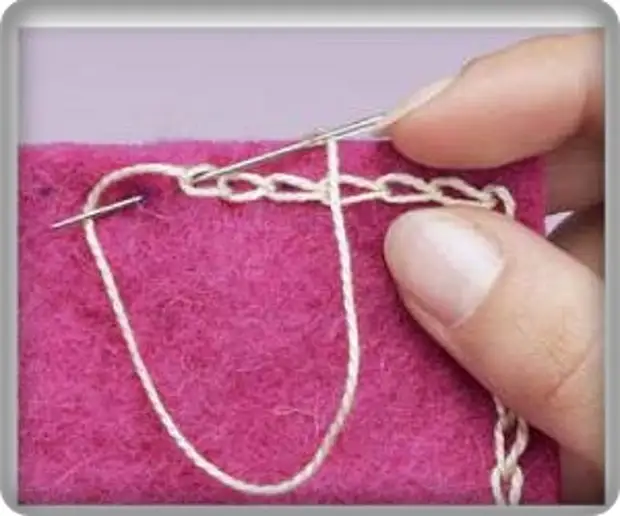
For work, any tissue strength and density are suitable: from air organza to thick felt. A very expressive combination of multicolored flaps and monophonic threads is obtained. Perfectly look and made in the patchwork technique in the proposed way of working out of the skin.
